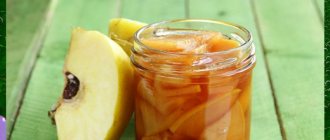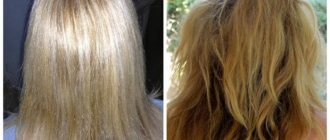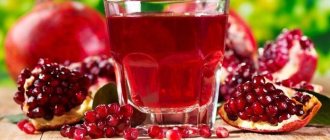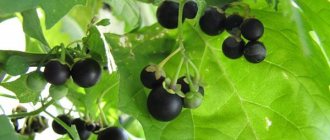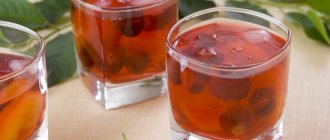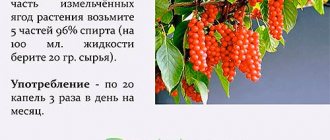Quince: composition, how to use
Quince belongs to the Rosaceae family and is a shrub or low tree in appearance. Its fruits always attract attention with their appearance, color, and smell. Quince is an unusual fruit in appearance and taste. In appearance and color, the fruit is very similar to a lemon, but is a close relative of our favorite and familiar pear and apple.
The fruit is considered a leader in the content of some valuable and beneficial substances for the body. Quince is invaluable for human health.
The ripened fruit weighs up to 170 grams.
Botanical description
Chaenomeles japonica (Japanese quince) is a close relative of apples and pears. It belongs to the rose family and grows as a shrub or tree. The height of adult specimens reaches 5 m. The bark is dark, with a reddish tint. The leaves are oval, with a heart-shaped base and a blunt end. Some varieties have wider, elliptical leaves. It blooms in spring with rather large, fragrant white-pink flowers.
The fruits in appearance and consistency are somewhere between an apple and a pear. The fruit tastes sour, with a characteristic strong aroma. The skin is covered with fluff. Cultivated varieties produce large fruits with better taste characteristics. The medicinal properties of the fruits of cultivated and wild trees are identical. In Russia, quince grows mainly in the southern regions.
Expert opinion
Anastasia Sergeevna
Experienced herbalist
The fruits of Chaenomeles ripen in the fall – in September–October. It is at this time that especially healthy, unprocessed fruits arrive on store shelves.
The nutritional value
| Name | Weight in gr. | Recommended Daily Value in % |
| Squirrels | 0,2 | 0,4 |
| Saturated fats | — | — |
| Monounsaturated fats | 0,1 | 0,2 |
| Polyunsaturated fats | — | — |
| Carbohydrates | 7,9 | 3,2 |
Table No. 1 “Chemical composition of quince”
| Item name | Content per 100 grams of product, milligrams |
| Vitamins | |
| Vitamin C | 23 |
| Beta carotene | 0,4 |
| Vitamin E (TE) | 0,4 |
| Vitamin PP (Niacin Equivalent) | 0,2 |
| Vitamin A (VE) | 0,167 |
| Vitamin PP | 0,1 |
| Vitamin B2 (riboflavin) | 0,04 |
| Vitamin B1 (thiamine) | 0,02 |
| Macronutrients | |
| Potassium | 144 |
| Phosphorus | 24 |
| Calcium | 23 |
| Sodium | 14 |
| Magnesium | 14 |
| Microelements | |
| Iron | 3 |
The fruit is rich in acids rare for humans: pectic, tartaric, malic, citric and tartronic.
The seeds contain a toxic and dangerous substance - amygdalin, tannins, mucus and fatty acids.
The calorie content of the pulp is only 49 kcal per 100 g. Its energy value (ratio of carbohydrates, fats and proteins):
• 0.6g (5%) proteins;
• 0.5g (9%) fat;
• 9.6g (805) carbohydrates.
What properties of Japanese quince are beneficial to our body?
The fact that it suppresses appetite is actually the main advantage of the fruit. The abundance of acid ensures the presence of the powerful antioxidant vitamin C. It is four times more abundant than in other quince varieties. It is believed that vitamin C helps the body produce a unique substance - interferon (a protein that performs a protective function and is produced by the cells of mammals and birds to fight viral infection). Combined with its high pectin content, this antioxidant also helps eliminate heavy metals from the body, which is why the ancient Greeks baked slices of Japanese quince with honey as a favorite delicacy to maintain a healthy body.
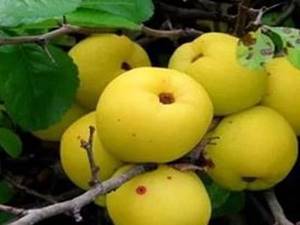
The astringent taste inherent in the fruit is due to the incredibly high level of tannin. Its combination with pectin and soluble fiber has been used since ancient times as an effective treatment for diseases of the gastrointestinal tract. With the help of the “northern lemon,” as the fruit is called because of the abundance of acid and green-yellow color, inflammation of the stomach and intestines was treated, and vomiting and diarrhea were relieved.
The list of advantages also includes a high potassium content, 100 grams of fruit - 144 mg, which is very useful for people suffering from cardiovascular diseases. Eating quince and products made from it can reduce swelling, improve blood circulation, and eliminate venous congestion due to varicose veins. Pectin is extremely beneficial for diabetics to reduce the absorption of cholesterol in the blood.
In addition, Japanese quince provides our body with carotene, vitamin A, as well as B vitamins; the seeds and pulp offer iron, calcium, phosphorus, manganese, phosphorus, nickel, boron, titanium and copper. In addition, the seeds contain gel-forming substances, which are very useful in the production of marmalade, preserves and jam.
Nutritional value of quince juice
100 grams of quince juice contains 51 kcal, which as a percentage of the average daily norm of 2400 kcal for women is 2.1%, and for men 2800 kcal is 1.8%.
Calculation of calories in different volumes.
| Unit of measurement | Weight (g) | Calorie content (kcal) |
| 1 tsp | 7 | 3,15 |
| 1 tbsp. l | 18 | 8,1 |
| 1 glass | 190 | 85,5 |
| 1 faceted glass | 240 | 108 |
Just one fruit a day helps replenish the body’s daily requirement of all useful and valuable substances.
There are many recipes here that will help you stay healthy.
Traditional medicine recipes
In folk medicine, both the fruits and leaves of quince are actively used for the preparation of medicinal products, and a complete surprise for many is the fact that even the seeds of this plant are suitable for the preparation of medicinal preparations. Let's take a closer look at the most popular folk methods of preparing medicines from chaenomeles. A decoction from the seeds of the plant for diseases of the gastrointestinal tract has an enveloping, healing and anti-inflammatory effect on a person, and for a cold, such a remedy will help eliminate bronchitis and other manifestations of the disease.
To prepare it, 10 g of seeds are poured into 250 ml of warm water, after which the mixture is stirred for 10 minutes and filtered through cheesecloth. The resulting mucous liquid is taken 4 times a day, 1 tablespoon after meals. Important! When preparing products from quince seeds, grinding the seeds is strictly prohibited, since in this case toxic substances will be released into the infusion, which can lead to severe poisoning.
To alleviate arterial hypertension, traditional medicine recommends an alcohol infusion from the leaves of the bush. To do this, 100 g of finely crushed fresh leaves are poured into 250 ml of vodka and infused for 7 days, after which it is filtered through cheesecloth. The resulting product is taken 20 drops 2 times a day.
A decoction of chaenomeles leaves helps eliminate symptoms of bronchial asthma and inflammatory diseases of the stomach. To prepare it, 5 g of leaves are poured into 250 ml of boiling water and left in a water bath for about 15 minutes. After this, the mixture must be removed from the heat, allowed to cool for 45 minutes, and then strain. Take the infusion no more than 4 times a day, 2 tablespoons before meals.
A decoction of quince fruits or syrup helps improve the condition of the blood system and treat anemia, general immunity and the course of colds. In order to prepare the syrup, you need to peel the fresh fruits, chop them finely, add a glass of water and cook until they become soft. After this, remove the pulp and strain it through a sieve. The resulting liquid must be boiled until it reaches the consistency of syrup.
In order to get a decoction of quince, pour 1 tablespoon of finely chopped fruit into 250 ml of boiling water and boil for about 10-15 minutes. After this, the mixture is covered with a lid and left for 30 minutes. The resulting decoction is filtered through cheesecloth and taken before meals, 1 tablespoon 3 times a day. Important! You should not overuse quince products, as long-term use can cause constipation. And during breastfeeding, an overdose of the mother’s body with highly active components of quince can lead to constipation and colic in the baby.
Use in cosmetology
In cosmetology, quince is used to improve the condition of skin and hair. The action is achieved due to the content of fruit acids, tannins, and vitamins.
For face
Quince-based face masks and lotions are especially useful for women with oily skin, freckles, age spots, and enlarged pores. To solve each problem, masks are prepared according to different recipes.
- From freckles. Squeeze the juice out of fresh fruit, dip a cotton pad in it and wipe your face. Due to fruit acids, freckles gradually lighten, excess fat is eliminated, and the skin becomes matte.
- From withering. Add a spoonful of quince juice, honey and vegetable oil to the beaten egg yolk. The mixture is applied to the face and washed off after 15 minutes.
- From wrinkles. Grate the quince on a fine grater, add egg yolk. The mass is evenly distributed over the face and left for 12–15 minutes.
- From oily shine. The quince is peeled, ground in a blender, and mixed with whipped egg white. The mixture is applied to the skin and washed off after 15 minutes.
- Toning lotion. Add two tablespoons of quince juice, a spoonful of glycerin and vodka to a glass of water. The lotion is thoroughly mixed and used to wipe the face in the morning and evening. Store the product in the refrigerator.
For hair
Quince leaves and seeds are mainly used to treat hair. The remedy is chosen depending on the problem that arises. The seeds and leaves are used for different purposes.
- Infusion of leaves. Rinsing with an infusion of leaves helps get rid of dandruff, strengthens hair, and gives a natural, beautiful shade to dark curls. To prepare the infusion, take 100 g of dry leaves per liter of boiling water. The product is infused for an hour, filtered, and rinsed with hair three times a week.
- Decoction of seeds. To eliminate excess oil in strands, prepare a decoction of a glass of water and a tablespoon of seeds in a water bath. Without waiting for complete cooling, rub the product into the scalp, put on a plastic cap, and wrap it in a towel. Leave for an hour, then wash off with warm water.
Expert opinion
Anastasia Sergeevna
Experienced herbalist
A useful procedure is rubbing the skin with a slice of fresh fruit. The acids in the juice act as a light peeling - they cleanse, refresh the skin, and increase tone.
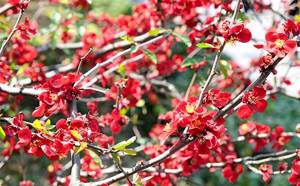
Quince: what are the benefits for the body?
In autumn, when the fruits ripen, acquire a bright yellow color, become aromatic and sweet-sour, the fruit fully exhibits all its beneficial properties.
The benefits of fruit for the body are great. Freshly squeezed juice and aromatic ripe fruits have many beneficial properties:
• help strengthen the intestines;
• improve the digestive process;
• contribute to the subsidence of all inflammatory processes in the gastrointestinal tract;
• help cope with severe poisoning;
• reduce pain in internal organs;
• indicated for hypertension and frequent headaches;
• increase hemoglobin levels;
• strengthen joints, reduce pain when walking;
• reduce the frequency and duration of asthmatic attacks;
• accelerate recovery from bronchitis, tuberculosis, pneumonia, acute respiratory diseases;
• have a calming effect on the nervous system after suffering stress or nervous overload, improve sleep, relieve anxiety;
• lower cholesterol levels;
• normalize sugar levels in diabetes;
• increase appetite;
• improve visual acuity;
• reduce the severity of symptoms of dermatitis; • fill the body with energy and vigor.
Scientists have long proven the ability of quince to strengthen the body's immune defense. They found that its general strengthening properties are several times stronger than those of viburnum and lemon. In just one month, quince fruits are able to restore intestinal microflora after long-term use of antibiotics.
The phenols and antioxidants present in the composition help to resist the body from the proliferation and spread of cancer cells. The tannins epicatechin and catechin help relieve chronic constipation. They bind and remove carcinogens from the body and help cleanse the intestines.
The use of quince is often recommended for pregnant women with toxicosis, and for patients in cardiology departments for the reason that it contains pyridoxine (vitamin B6). It is considered the best preventative measure for heart attack, helps reduce swelling, normalizes all metabolic processes, and prevents the occurrence of ischemia and atherosclerosis.
Adding fresh root vegetables to your diet is an affordable way to prevent macular degeneration and cataracts
Quince is an effective antipyretic. It can be included in the diet for colds and viral diseases in order to relieve high fever and speed up recovery.
A decoction of the seeds can stop any type of bleeding. If you are sensitive to weather changes and changes in atmospheric pressure, it is recommended to include quince in your diet. Many people don’t even know, but quince quickly removes bad breath.
Quince: what is harmful to health
In addition to such a large number of beneficial properties, quince has a number of contraindications. Do not forget that its seeds (seeds) are poisonous. Therefore, before you cook anything from it, all the seeds should be removed. If a medicinal decoction is prepared from the seeds, you should not grind them. They contain amygdalin, a toxic glycoside. When grinding the seeds, it easily dissolves in the infusion, causing harm.
If intolerance to the product is revealed, i.e. signs of an allergy to quince will appear after the first use; it is better to avoid further consumption of it. The fruit is exotic and if you overeat it, allergy symptoms can appear even in a healthy person.
The positive effect of quince on the nervous system can turn into harm if its norm is exceeded. Excessive amounts will have a psychotropic effect on the body.
If a person uses vocal cords in work, then the constant presence of quince in the diet harms them. Teachers, singers, and actors should give up this fruit.
The astringent effect of the fruit is a contraindication for use in chronic constipation.
The lint on the skin of raw fruit can cause a sore throat and make breathing difficult.
Quince can also cause harm to health if the conditions of its storage and transportation have been violated. When buying fruits, you need to pay attention to their appearance:
• they should not have dents or mold;
• each purchased fruit must be firm;
• sufficient ripeness is indicated by the uniform yellowish color of the skin;
• each fruit must have a separate package.
At home, before storing, each fruit must be washed and fluff removed from the surface. They are placed in a plastic bag and stored in the refrigerator for no more than 60 days. It has been noticed that if a quince is placed next to a pear, the speed of its ripening increases sharply, and its shelf life decreases.
Quince for children: good or bad
Fruits containing a significant amount of micro- and macroelements, vitamins, pectin substances and essential organic acids have a beneficial effect on the developing child’s body. They:
• influence the proper formation of the body;
• promote mental development;
• strengthen the immune system;
• strengthen the digestive organs;
• accelerate recovery from colds and viral diseases;
• influence the formation and strength of bone and dental tissues.
Raw quince is not given to children until they are one year old. Despite the low allergenicity, acquaintance with it can only begin at 10 - 11 months. You can offer your baby skinless baked pulp, marmalade, vegetable or meat casseroles, pies, compote, juice.
Before introducing quince into complementary foods, it is necessary to consult a pediatrician to exclude contraindications. It is important not to forget that this fruit has a strong astringent effect. If your baby suffers from constipation, you should stop using it. Children should not be given unpeeled fruit. Fine fuzz on fruit skins can cause larynx irritation. The baby may develop a cough and a “red throat” symptom.
No one doubts the fact that quince is very useful for adults and children. The minor harm it can cause to health is related to the amount of its consumption.
Collection, preparation and storage of medicinal raw materials Since the fruits of the bush, like most plants, are a seasonal product, there is an urgent need to preserve until the next season not only the taste, but also the beneficial qualities of Japanese quince derivatives to the maximum. For this purpose, folk practice has invented a lot of recipes for preparing it for the winter, which we will talk about later. Fruits Fruits are harvested only after they are fully ripe. In this case, they accumulate the maximum amount of necessary nutrients. A clear sign of a ripe fruit is a change in its color from pale green to bright yellow or orange.
Quince marmalade will appeal even to those who are not particularly fond of these fresh fruits. The delicacy is fragrant, pleasant to the taste and extremely healthy. It is prepared without adding any gelling components, since the peel of the fruit contains an impressive amount of pectin, which helps the dessert harden and acquire a dense texture.
Japanese quince marmalade - homemade recipe
Ingredients:
- Japanese quince – 2.4 kg;
- purified water – 260 ml;
- granulated sugar – 310 g.
Preparation
- To prepare marmalade, wash the quince thoroughly with a brush, cut the fruit in half and cut out the cores with seeds. The specified amount of fruit should yield approximately two kilograms of pure quince pulp.
- Place the quince in a saucepan, fill it with purified water and place it on the stove burner.
- Boil the contents of the vessel until the slices are softened and almost all the liquid has boiled away.
- Now we beat the boiled quince with a blender until we get a creamy puree and mix it with granulated sugar.
- Place the container back on the stove, let the mixture boil and keep it on the fire, stirring almost continuously, for an hour and a half.
- After some time, spread the marmalade base into a mold lined with a parchment sheet or on a baking sheet, forming a layer no more than 3 centimeters thick.
- We dry the marmalade for 24 hours on one side, and then carefully turn it over onto another piece of parchment and dry the delicacy on the other side.
- Now we cut the marmalade layer into pieces of the desired size and shape, put them in a suitable container and put them away on the refrigerator shelf for an additional three to four days.
- After time, you can take a sample from the marmalade. Its taste is moderately sweet and not at all cloying. But for those with a sweet tooth, we recommend preparing marmalade according to the following recipe.
How to make sweet quince marmalade in a slow cooker - the most delicious recipe
Ingredients:
- Japanese quince – 2.4 kg;
- purified water – 2.8-3 l;
- vanilla pods – 2 pcs.;
- granulated sugar – 2-2.2 kg.
Preparation
- In order to prepare sweet quince marmalade in a slow cooker, carefully wash the quince fruits with a brush and remove the cores with seeds.
- Cut the fruit pulp into bars or cubes, place in a multi-pan, fill with water until completely covered and cook in the “Cooking” or “Soup” mode for twenty minutes.
- After the signal, drain the quince pieces onto a sieve, getting rid of the remaining broth, then punch the slices to a smooth, smooth puree using a blender and return to the multicooker.
- Add granulated sugar to the quince puree, add vanilla pods and mix.
- We change the device mode to “Milk porridge” or simply “Porridge” and simmer the marmalade base in this mode with the lid open for twenty to thirty minutes.
- The lid of the device must be open during operation of the last mode, and the contents must be constantly stirred.
- We evaluate the thickness of the resulting mass and if it is insufficient and more like fruit puree than a viscous base for sweet marmalade, then we repeat the “Porridge” mode again, achieving the desired texture of the delicacy.
- Now you need to put the quince mass in a form lined with a parchment sheet or on a baking sheet, forming a layer that is not thick, about two centimeters.
- After forty-eight hours of drying the delicacy at room conditions, it can be cut into slices and the excellent taste of the resulting dessert can be appreciated.
- If desired, slices of marmalade can be breaded in sugar or coconut flakes, and also supplemented with nuts.
Did you know? Quince is one of the most ancient plants used in medical practice. The ancient Greeks were involved in the collection and preparation of bush fruits. The ideal period for collecting is late autumn, but you need to do it before the first frost. There are many ways to preserve fruits until next season. The most popular are: Making jam: the fruits of the plant are cleaned, crushed and poured with boiling syrup. For 1 kg of fruit use 1.5 kg of sugar and 400-500 ml of water. After this, the mixture is boiled for about 5 minutes and removed from the heat for 6 hours to infuse. After this, boil for no more than 5 minutes and remove from heat for 12 hours. The procedure is carried out 5 times, after which the jam is ready for sterilization and pouring into jars.
Preparation of candied fruits: the fruits of the bush are cleaned, finely chopped and poured with hot syrup. For 1 kg of fruit take 1.2 kg of sugar and 600-700 ml of water. The mixture is infused for about 6 hours, then boiled for 5 minutes and left to infuse for about 12 hours. After which the procedure is carried out 4 more times, then the liquid is removed through a sieve, and the remaining fruits are dried.
Boiling to the state of marmalade: peeled and finely chopped fruits are rubbed through a metal sieve or meat grinder and 1.3 kg of sugar is added per 1 cl of fruits. Next, the mixture is boiled until a characteristic viscous consistency appears, sterilized and poured into jars.
Dried fruits: the fruits are peeled, finely chopped and dried in a warm place to their characteristic condition. The seeds can also be dried and used to prepare infusions in the winter.
Eating
The fruit has a sour taste, so it is rarely used fresh. Fresh fruit is added to tea, which saturates its taste and aroma.
A drink with quince has a beneficial effect on the entire body.
Preserves, jams and compotes are made from the fruit. Canned quince acquires a pleasant taste while retaining its beneficial properties.
Preparing for the winter is a common way to use the fruit.
READ ALSO: Recipes with dried apricots, raisins, walnuts, honey and lemon - calorie content, benefits and harm
Jams, jams and jams from Japanese quince have a diuretic effect and are recommended for cystitis.
It also relieves fever and helps with toxicosis.
Desserts are prepared from quince:
- cakes,
- cakes,
- candied fruit,
- marmalades.
After heat treatment, the fruit becomes tasty and sweet.
In oriental cuisine, quince is added to various dishes:
- pilaf,
- meat,
- omelettes, etc.
To preserve its beneficial properties, Japanese quince is stored fresh with sugar. To do this, the fruit is cut into slices and placed in layers in a jar.
The layers are sprinkled with sugar. All this is rolled up with a lid and placed in the refrigerator.
The fruit in this form is added to tea. The drink is useful in winter, during the period of exacerbation of colds.
Beneficial properties of quince-based masks
A quince face mask is a cosmetic product that will provide the skin with nutrients, saturate it with vitamins and prevent premature aging of the dermis. Thanks to the unique composition based on the fruit, you can make masks suitable for all skin types. If you add accompanying components to quince, the positive effect will increase significantly.
Quince pulp is a very healthy product, rich in vitamins and nutrients necessary for facial skin. With false apple, as quince is often called, you can prepare masks that will help get rid of several problems at once. This can be done thanks to the list of important properties that the fruit has.
The beneficial properties of quince masks include:
- Nutritious
. This fruit contains a colossal amount of useful components - acids, tannins and pectin, as well as a wide range of vitamins and microelements that deeply nourish the skin. The composition of the natural product is 100% absorbed by the epidermis. Facial skin becomes soft, toned with a natural healthy glow.
- Antiseptic
. Mineral and biologically active elements in the fruit help get rid of bacteria that can cause acne. Quince masks also have the ability to reduce inflammation on the face.
- Cleansing
. Quince delicately cleanses the epidermis, removing dirt and accumulated fat from the pores. Useful microelements improve blood circulation and cell renewal. After using the masks, your facial skin looks rested and fresh.
- Mattifying
. Citric and malic acids contained in quince remove oily shine and lighten the tone of the dermis. It is often used to get rid of freckles or age spots. It acts very gently without irritating the skin.
- Rejuvenating
. Thanks to the increased concentration of ascorbic acid, false apple is a natural antioxidant that tightens the skin, providing a lifting effect. And tannins make the dermis smooth and soft to the touch.
Quince mask recipes for different skin types
Due to the fact that quince has a rich, diverse composition, masks with this fruit can be prepared for women with any skin type. Of course, a lot depends on the accompanying components, which will soften its effect or, on the contrary, enhance it. By following the recipe for preparing mixtures at home, you can provide the skin with deep nutrition, hydration, and also stop the aging process, tighten the oval of the face and get rid of freckles and acne.
Due to the significant production of gastric juice, this berry can cause heartburn, discomfort and some stomach diseases.
Preparing quince masks for oily skin
Oily skin especially needs regular care, namely cleansing the pores and using products with mattifying and drying effects. Cosmetic masks based on quince have these properties.
Effective mask recipes:
- Brightening
. To prepare a toning mask, mix 2 tbsp. l. finely grated quince with well-beaten white of one egg. The product improves blood circulation, brightens the skin and tightens pores. - Moisturizing
. 2 tsp. Mix aloe pulp with 1 tbsp. l. chopped quince. This product removes oily shine well, has a mattifying effect, but at the same time deeply moisturizes cells, retaining moisture in them and slowing down the aging process. - Anti-inflammatory
. For this mask you will need 1 tbsp. l. oatmeal, crushed into flour, 2 tbsp. l. quince mass and 2 tbsp. l. warm milk. All ingredients must be mixed thoroughly. This product cleanses pores, brightens skin tone, nourishes and eliminates inflammatory processes, eliminates redness and irritation. - Anti-acne
. Often those with oily skin suffer from acne. To cope with this problem, you can use the following recipe: combine 1 tbsp. l. white clay and 2 tbsp. l. warm milk, and then add 2 tbsp. l. quince puree. This mask has drying and antibacterial effects.
Dry skin requires nutrition and protection from environmental influences. It is also important to provide the dermis with maximum oxygen supply. In this case, the mask should act gently and delicately. All these tasks are perfectly performed by quince in combination with certain components.
Mask recipes for dry skin:
- Nutritious
. To prepare it, mix the yolk of one chicken egg with 1 tsp. natural liquid honey and 1 tbsp. l. ripe quince pulp. The mask perfectly softens the dermis, the yolk prevents drying out and provides deep nutrition to the cells, and honey and quince saturate the skin with beneficial microelements and vitamins.
- Rejuvenating
. Many women believe that dry skin is not as susceptible to premature aging as oily skin. At the same time, cosmetologists claim that it is on dry skin that deeper wrinkles appear, which are almost impossible to get rid of. A mask with quince will help prevent the appearance of such folds. To prepare it, mix 1 tbsp. l. quince puree with 1 tbsp. l. banana puree, 1 tsp. olive oil and 1-2 tsp. cream to get the desired consistency. The product evens out the skin, deeply nourishes and promotes the production of natural collagen.
- Protective
. Suitable for use in the cold season, when women more often suffer from irritation and a feeling of tightness of the skin. In order for quince to open up as much as possible and provide the dermis with protection, you can mix it with glycerin. For this, 2 tbsp. l. Mix quince pulp with 1 tsp. glycerin. After this mask, the face will be protected with a special thin film. The remains of the mask should be removed with a napkin, and you can wash your face only the next day.
Quince-based masks for normal and combination skin
Do not forget that false apple is a natural antioxidant, and all cosmetics containing this fruit slow down the aging process, so it is especially useful to use this ingredient for women with aging, dull skin.
The essence of quince masks for aging skin lies not only in their direct action, but also in the fact that they trigger natural processes: the skin begins to more actively independently produce collagen and elastin - substances responsible for the youth of the dermis.
Recipes for quince-based masks with a lifting effect:
- Smoothing
. This recipe is considered very effective, despite the fact that it only has two ingredients - quince and ginger root. The fact is that ginger is also a strong component that rejuvenates, tightens, nourishes and heals the dermis, improving blood flow. To prepare the mask, squeeze 10 ml of juice from chopped ginger, dilute it in 20 ml of warm water and mix with 2 tbsp. l. chopped quince. This product will help get rid of fine wrinkles and make deep folds less noticeable.
- Pull-up
. This mask is very fast acting, after the first use you will notice that the oval of your face has become clearer and your skin has tightened. For this result you will need to mix 1 tbsp. l. quince puree, 1 tsp. live yeast, 1 tsp. sauerkraut juice (you can use lemon juice), 2-3 drops of camphor oil. Mix the yeast and quince first, and then add the rest of the ingredients.
- Leveling
. This mask will not only make the skin smooth, eliminating uneven surface texture, but will also whiten age spots - a characteristic sign of age. For this mixture you need to prepare 1 tbsp. l. oatmeal (special flour made from rye or barley), 2 tbsp. l. chopped quince, 1 capsule of vitamin E, 2 tbsp. l. heavy cream. Mix quince pulp with cream, add vitamin E, and then flour. This product will gently cleanse the dermis, which will promote cell regeneration and renewal, and vitamin E will speed up the results. Quince will have a mild whitening and nourishing effect.
Important! The main feature of quince: when you combine this component with the right additional ingredients, you can get a fantastic result in a short time.
Rules for using quince masks
In order for the skin to receive all the necessary vitamins and microelements that make up quince, it is important to be able to choose and prepare the fruit for use correctly. There are several important rules by adhering to which you can get decent results from using cosmetic products with this fruit.
Rules for using masks:
- For cooking, choose only whole, ripe and well-washed fruits.
- You can also use the peel along with the pulp, because it contains the maximum amount of vitamins.
- You can grind the fruit in several ways: in a meat grinder, finely chop or puree using a blender. For most recipes, the pureed form is convenient - it allows you to mix the mask with any ingredients.
- When all the components are combined into a homogeneous mass, immediately apply it to your face.
- You cannot store the mask; already half an hour after combining, the beneficial properties of quince are lost by almost half, so there is no point in preparing the product for future use.
- Apply the mask to your face very carefully so that it does not drip. In some cases, the product may turn out to be a little liquid. In this situation, use a paper or cotton napkin to cover your face so that the mixture does not spread.
- The operating time of the product on the face is 15-20 minutes.
- Rinse off the mask first with warm water and then with cool water.
- If during the procedure you feel itching or burning, the remaining product should be washed off immediately. When using masks with quince, this effect should not occur. This is only possible if you are allergic to it or to another ingredient.
- After the mask, lie down in a quiet position for 10-15 minutes, then, if you feel that your face is starting to tighten, use a nourishing cream.
Making a quince mask is simple, but the most difficult part is carefully dividing the fruit into two parts to remove the seed. Do this carefully with a knife to avoid injury.
Preparing quince masks for dry skin
Application in dietetics . There are many diets in which quince is an indispensable component. Low energy value, insignificant amount of fat, absence of “bad” cholesterol, significant fiber and copper content make it possible to use quince for those who are struggling with extra pounds. By improving the digestion process, the fruit helps remove accumulated toxins and waste, and eliminates subcutaneous fat reserves.
In order for all the above-described recipes and recommendations related to Japanese quince fruits to bring only benefit without harm, you must first consult a specialist or your doctor, especially if you have serious illnesses. After this, you can safely use this wonderful fruit for culinary delights or for medicinal and preventive purposes.
Chemical composition
Fruits, seeds and leaves have a rich chemical composition, which determines their healing properties. Systematic consumption of small amounts of quince provides the body with almost all the necessary substances. You can familiarize yourself with the chemical composition in the following tables.
Table - Minerals included in quince
| Mineral | Content per 100 g, in mg | The role of the trace element |
| Sodium | 1 | – Participation in water-salt metabolism; – maintaining the functioning of the kidneys and nervous system |
| Potassium | 119 | – Normalization of heart function; – conduction of nerve impulses |
| Calcium | 11 | – Participation in the structure of bone tissue; – helps with blood clotting; – improvement of muscle contractility |
| Copper | 0,130 | – Biosynthesis of hemoglobin; – formation of nerve sheaths; – production of collagen and elastin |
| Iron | 0,70 | – Hemoglobin production; – immune system support; – providing the body with oxygen |
| Phosphorus | 11 | – Support of acid-base balance; – participation in cell growth |
| Selenium | 0,6 | – Regulation of the thyroid gland; – increasing the antioxidant activity of vitamin E |
| Zinc | 0,04 | – Production of female and male hormones; – participation in antiviral protection; – strengthening the immune system |
In addition to macro- and microelements, quince contains a complex of vitamins that are vital for the human body.
Table - Vitamins included in quince
| Vitamin | Content per 100 g | The role of vitamin |
| A | 12 mcg | – Participation in the growth processes of the body; – maintaining normal vision |
| IN 1 | 0.02 mg | Control of amino acid and carbohydrate metabolism; |
| AT 2 | 0.03 mg | Regulation of protein, fat metabolism, oxidation processes in tissues |
| AT 3 | 0.2 mg | – Participation in tissue respiration; – support the stability of the nervous system |
| AT 5 | 0.081 mg | – Synthesis of fatty acids; – stimulation of glucocorticoid production; – normalization of lipid metabolism |
| AT 6 | 0.04 mg | – Participation in metabolic processes; – maintaining the normal state of the central nervous system |
| AT 9 | 3 mcg | – Support the cardiovascular system; – mood regulation; – synthesis of amino acids, enzymes |
| WITH | 23 mg | – Maintaining the immune system; – participation in hematopoiesis |
| E | 0.4 mg | Digestion of proteins and fats |
| RR | 0.2 mg | – Normalization of blood clotting; – calcium absorption |
Expert opinion
Anastasia Sergeevna
Experienced herbalist
Not only the fruits, but also the seeds of quince have healing properties. For example, two or three seeds placed under the tongue help with dry mouth.
